|
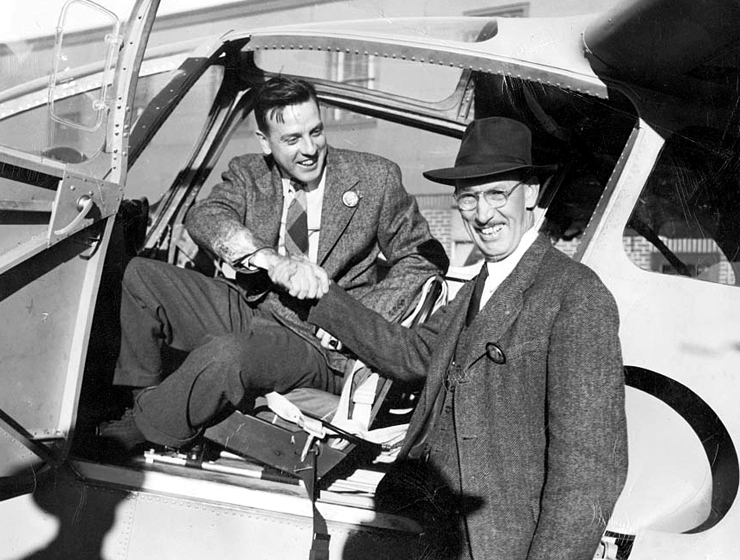
|
Many individuals have played important
parts in
the history of the Seabee; as engineers, test-pilots, Republic Aviation
Corporation employees, as mechanics, as Seabee owners and pilots, as dealers,
etc. During
the 50+ years of Seabee history, many Seabee experts have helped keeping
the Seabees flying. The Seabee People section will have short biographies for some of
them. If you have corrections, additional information and
suggestions for people that should be added, please e-mail
me.
|
|
|
|
|
|
|
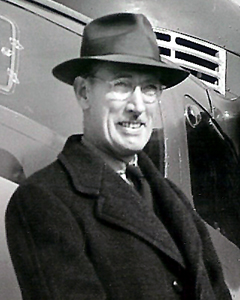
|
Percival H. Spencer
Percival Hopkins Spencer was born
on April 30, 1897 in
Windsor, Connecticut. Percival
always hated his name and preferred to be called "Spence".
As the third child of inventor genius
Christopher Miner Spencer, Spence was destined to become an inventor
from the genes. Christopher M. Spencer (1833 - 1922) invented one of the earliest successful
repeating rifles in 1860, the automatic screw machine (that produced
screws in one operation) in 1873 and the repeating shotgun in
1886.
Growing up in the early days of
aviation, Spence very soon showed a keen interest in the 'flying
machines'. When
Popular Mechanics Magazine published plans for a hang glider, the
youngster built one, thus providing the means to make his first solo
flight April 2, 1911 at age thirteen from Prospect Hill in Keeney Park.
On May 15, 1914, just two weeks after his 17th
birthday, Spence made his first flight in a powered aircraft. He
had rebuilt a Curtiss-type flying boat, which he took took to the air
from the Connecticut River
in Hartford. This was the start of a long career as a pilot,
inventor and aircraft designer.
In
1940/41 Spence designed the first Spencer S-12 Air Car amphibian. Late
in 1943 the Air Car design patent was sold to Republic
Aviation Corporation, where Spence started to work as a design
consultant and a
test pilot. Republic developed the Air Car into
a four seat, all metal amphibian, from 1943 to 1945. Named RC-3
"Seabee", the amphibian became Republic's contender to the
post WW2 personal airplane market. 1060 Seabees had been built
when production ended in October 1947.
In 1968,
Spence designed and marketed with his partner,
retired USAF Col. Dale L. "Andy" Anderson, the 4 passenger
Spencer Amphibian Air Car, (S-12C, D, E) as a home built.
Spence
passed away on January 16, 1995 in the
Del Amo Nursing Home, Torrance, California. Read more in the Spence
Biography.
|
|
|
|
|
|
|
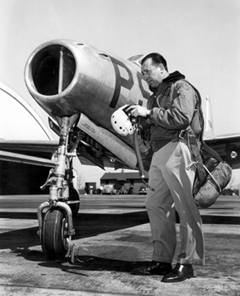
|
Carl A. Bellinger
Unlike
most military-trained factory test pilots, Carl Bellinger came up
through the civilian piloting ranks after earning his private license in
1930. He started his career in 1939 as a production test pilot on
the P-47 thunderbolt, and flew the experimental XP-72 version of
that aircraft as well. While testing the Republic F-84B
Thunderjet, he established a new world speed record of 621 mph.
After
performing initial taxi tests of the new XF-91 hybrid jet/rocket
interceptor at Republic's Farmingdale, Long Island facility, Bellinger
made the first flight of that radical aircraft at the Muroc Air Force
Flight Test Center (later Edwards AFB) on May 9, 1949. During an
inflight emergency in the XF-91, he was guided to a successful emergency
landing by his Air Force chase pilot flying an F-86 Sabre that day, who
was noneother than the legendary Capt. Chuck Yeager.
Bellinger
relocated to California as Chief Experimental Test Pilot to head up
Republic's test operations at Edwards, and eventually returned to
Farmingdale to serve as Manager of Flight Test. He also held the
distinction of having flown Republic's largest and smallest aircraft,
the sleek four-engined XR-12 Rainbow, and of course the Seabee. [Thanks
to Mr. Mike Machat for writing the above biography on Carl Bellinger].
As
one of the Seabee test pilots, Bellinger dive tested the Seabee up to an
airspeed of 189 mph. In one of the dive tests made for the CAA
certification, the nose door became unlatched.
|
|
|
|
|
|
|
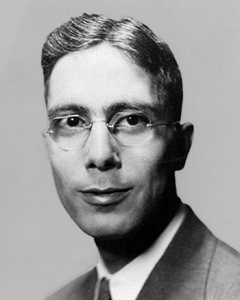
|
Alfred Z. Boyajian
Alfred
Zaven Boyajian - a first generation Armenian American - was born on 5
June 1913 in Watertown, Massachusetts, as the youngest of four children.
His brother was Vahe and his sisters were Knar and Penny.
He
educated at MIT - Massachusetts Institute of Technology and majored in
Aeronautical Engineering in 1935.
As a young and talented aeronautical engineer,
Boyajian was employed by Republic Aviation Corporation, Farmingdale,
Long Island, New
York.
The spectacular success of Republic's labors to simplify the Seabee airframe for mass
production can to a great extent be credited to Republic's genius
structures project engineer Alfred Boyajian. By applying then new
theories of stress analysis to the Seabee design, Boyajian substituted the complex
conventional ribs, spars, stringers, clips, angles, and other reinforcements that aircraft designers
took over unquestioningly from aviation's wood-and-fabric days, with
simple metal counterparts easily produced and assembled by automotive
manufacturing methods. Although the
Seabee was 15 per cent larger than the conventional RC-1 prototype, it had one-fourth the parts and
took less than
one-twelfth the man-hours to build. On individual assemblies the savings were often much greater.
1. The hull: Far more difficult to build than a fuselage, the prototype Seabee hull required 362 parts, 590 man-hours, and 6,500 rivets. By putting most of the internal weight into a tough outer shell, Republic greatly increased strength and corrosion resistance. Eliminated: 20 pounds, 299 parts, 560
manhours, and 4,100 rivets. Labor savings:
$1,400.
2. Stabilizers: Republic's search for simplification began with this assembly. All but one rib and two spars were dropped, their strength
replaced by a heavier skin with raised beads four inches apart, like the wing skin at right. Savings: 32 parts,
11.5 man-hours, 361 rivets, and $28.75 in labor.
3. Wingtip floats: Here a typical, twelve-part "egg-box" aircraft construction totally vanished,
leaving a two-part job whose deep-drawn halves were simply welded together, with a hit of
riveting around the neck. Fabrication time: 15 minutes. Saving: $23.
4. The wing: To prove to skeptics at Republic that the new stabilizer was no aerodynamic freak, the same principles were applied to the
wing panel, which is ten times as large. The long-revered internal maze of ribs
and stringers of the conventional design melted into three ribs and three spars.
Over the simplified skeleton a single ribbed sheet is curled, riveted in one pass through Republic's new
machine,
and closed with a simple cap at the tip. Parts were reduced from 114 to 30, weight from 150 to
110 lbs, rivets from 2,627 to 882, and manhours from 280 to
15. Labor savings: $662.
5. Ailerons: Republic's successful surgery had cut aileron parts from eighteen to eleven,
thereby saving $27 in manhours. The completely hollow, six-part model
could be made in eighteen minutes.
Boyajian published several scientific papers and
lectures on his revolutionary approach to simplification of aircraft
structures for low cost manufacture using automotive manufacturing
methods. He was awarded patents for the Seabee construction
methods. In addition to the Seabee, Boyajian also worked as a
structural engineer on the P-47, F-84, XF-12 and XF-91 aircraft.
Alfred Boyajian married Grace A. Nakashian, also a
first generation Armenian American, and they got two sons; Alfred (Fred)
Mitchell Boyajian (30 August 1945) and David Edward Boyajian (11
December 1947).
Alfred Z. Boyajian passed away in California on 6 January 1988.
|
|
|
|
|
|
|
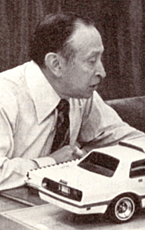
|
George Hildebrand
George
Hildebrand came with his parents to the USA from Paris, France, in
1915. His father was a noted fashion designer, and George soon
exhibited the design talents of his father. An early interest in
cars took him to all the auto shows and design studios, and soon he
worked as an apprentice with such companies as LeBaron and Rollston,
helping designing the beautiful bodies of Dusenberg and Packard
automobiles. Later he studied with master automotive artist Roland
Stickney.
In 1939, while working with legendary Cadillac design
chief William Mitchell in Detroit, George saw a small want ad in a
Detroit newspaper asking for "automotive designers to join the
aircraft industry". The aircraft company was based on Long
Island, New York. Sticking to his saying that "once you've
lived in Manhattan, anywhere else is like camping out" - George
applied for the job. On Christmas Eve day 1940 George started his
new job as a design engineer with Republic Aviation Corporation.
His first assignment was to design cockpit canopy
enclosures with improved visibility for pilots during aerial
combat. One of his projects included the P-47D single piece
"blown bubble" canopy. Next project was the new Republic
Seabee amphibian that Republic was developing for the expected post war
personal airplane market. Again George's automotive design
experience paid off handsomely. George was responsible for
designing the cabin and considered the Seabee his personal favorite,
because "it was the only Republic airplane that allowed the pilot
to take along his entire family!" All Seabee enthusiasts who
love the 'art deco' 1940s Ford look of the Seabee, are deeply grateful
to George Hildebrand and his people for creating the unique classic
style of the Seabee. One of the special features of the interior
is the seats that can be arranged into beds!
After the demise of Republic's civil projects, the
RC-2 Rainbow airliner and RC-3 Seabee, Republic focused on military
aircraft and designed some of the greatest classic jet fighters ever
built; F-84 Thunderjet, F-84F Thundestreak, RF-84F Thunderflash, XF-91
Thunderceptor, F-105 Thunderchief. Hildebrand is credited for the
F-105 getting the name "Thunderchief". George worked
closely with his friend, and legend aircraft designer, Alexander Kartveli
for many years. George projects for the 'Thunder'-jets included
ejections seats and escape systems, canopies, interiors, etc.
Several of his designs were patented, including the cantilever canopy
design of the F-84F and the F-105 rocket powered ejection seat.
Hildebrand was also consulted by Republic engineering
friend Herbert Lindblad to design the interior of the C-1 Skimmer
amphibian that Grumman engineer David B. Thurston and Herb Lindblad were
designing in their spare time. Thurston and Lindblad formed Colonial
Aircraft Corp. in 1946 to build and market the C-1/C-2
Skimmer amphibians. They are still produced in developed form as
the Lake Renegade amphibians.
In the mid 1960s Republic started suffering hard
times, and eventually took on civil non-aviation projects, including a
contract with New York State for the design and construction of safety
concepts to improve crash survivability in future cars. With
George as the program manager and chief designer, the Fairchild-Republic
Safety Car Program designed several innovative safety features that only
in our days are starting to be standard on most cars; interior
inflatable crash cushions ('air bags'), high mounted brake lights,
children safety carrier seats, seat headrests against whiplash injuries,
high impact bumpers, etc. Two prototype ESV (Experimental Safety
Vehicle) cars were built by Republic Fairchild for DoT in the early
1970s to demonstrate the safety concepts that all cars have today.
George retired from Republic in 1972. He was
always proud of being a "RACer"! George Hildebrand passed away
in 1983. However, his heritage lives on in every Republic
Seabee flying... [Many thanks to aviation artist and magazine editor Mr.
Mike Machat for supplying this fascinating information on his
uncle! See "Wings Magazine", October 2000 issue, for
more...]
|
|
|
|
|
|
|
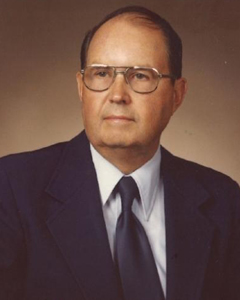
|
John Philip Hooper
John Philip Hooper passed away peacefully on August 17,
2015. He was 101 years old. John was born in Saginaw, Michigan on July
24, 1914 to James and Arvilla Hooper. He graduated from Arthur Hill High
School in 1931 and married Edythe Margaret Sharpe on October 10, 1936.
During World War II he served as a flight instructor for the War
Training Service and also worked as a flight school manager for Purchase
Flying Service at the old Saginaw Municipal Airport. In 1946 John and
his partner, John Langschwager, established Sky Haven Airport on 86
acres of farmland on North Michigan Road. The airport operated a flight
training school and offered airplane rides along with aircraft storage
and repairs. The partnership also owned a Republic Seabee dealership and
flew demonstration flights over Saginaw Bay.
For the next seven years John additionally served as a
private commercial pilot examiner for the US Civil Aeronautics
Administration and as an advisor to the Michigan State Board of
Aeronautics. In 1950 the partners opened Skyway Television Sales and
Service, later to become Skyway Furniture and Appliances, at the airport
site. They closed the airport in 1953, and the planes were sold. In 1965
they built Skyway Plaza shopping center and developed the remaining
property as Skyhaven Park, a residential community.
After retiring in 1970, John and his wife Edythe
maintained a winter residence in Bradenton, Florida and a summer home in
Suttons Bay, Michigan. He enjoyed golf and fishing and created and
hosted the online version of the International Republic Seabee Owners
Club, providing a valuable way for Seabee owners from around the world
to sell and exchange parts, service and information related to these
historic planes. John was a long-time member of the Saginaw Country
Club, the Elks Club, the Germania Society, the First Congregational
Church and, more recently, The First Presbyterian Church.
He was preceded in death by his wife Edythe (October 22,
2000) and re-established residence in Saginaw at that time. He is
survived by his son James Hooper and daughter-in-law Sharon, his
daughter Patricia Everhardus and son-in-law John, his grandchildren Cory
Hooper Conti, William Hooper, Thomas Hooper, John Everhardus, and
Katherine Everhardus Hipps, and seven great-grandchildren.
|
|
|
|
|
|
|

|
Fenwick E. Lind
Fenwick E. Lind, was born in Pontiac,
R.I. on March 5, 1923, and passed away Monday, December 27, 2010. He was
a retired captain in the Air Force, a retired captain for Eastern
Airlines, an EAA lifetime member 197443, a Quiet Birdman member 38866
and a Willow Creek Church member since 2000.
Fenwick's career in aviation started
at age 10, when his dad bought him a 45-minute ride in an Aeronca C-2 at
the local airport. The Depression year of 1933 meant the $5 ride was a
sacrifice on the family budget, but each time Fen heard an airplane, he
had to run outside to watch. His father was far from wealthy, but he
knew someday his son would sprout wings. The pilot of the C-2 was a
splinter of a man, probably weighing 95 lbs. dripping wet, so Fen easily
slipped in beside him in the narrow cockpit. His career was clear after
that ride! Fast forward to Dec. 7, 1941, with the Japanese bombing of
Pearl Harbor. Fen had logged 75 hours flight time flying in the civilian
pilot training program (CPT), and then with the U.S. at war, he entered
cadet training with the Navy, gaining his wings in July 1943, at age 20.
He promptly signed up as a fighter pilot with the Marine Corps. Flying
F4U Corsairs, he survived three campaigns of island hopping in the
Pacific from Bougainville all the way to Leyte, in the Philippines.
Antiaircraft shot him down in 1944
near the Jap-held Rabaul Harbor, and after paddling four hours in his
rubber raft, he was rescued by a Navy PBY, "Dumbo." Forty plus
'missions' later and two DFC's, he returned home in 1945 to find no
steady flying jobs available. So Fen went back to college (University of
Miami), where he earned his degree in 1949 in aeronautical management.
Finally in 1950, Eastern Airlines recognized his worth and placed him in
the right seat of a DC-3. In six years, he had his fourth stripe, and
was a captain for the second time, but as a civilian.
During his 33 years with Eastern, he
typed on most all the airline offered from the Martin 404, Convair 440,
Douglas DC-58, DC-7B, Lockheed L-649 through L-1049G, L-188, Boeing
B-707, B-720, B-727, and his favorite, the L-1011 wide body, when he
retired at the mandatory age of 60.
Following retirement, Fen continued
flying his own Twin SeaBee off beautiful Cobbetts Lake in southern New
Hampshire, where he had restored a six-bedroom home. After selling the
Twin SeaBee in 1997, Fen and his wife, Lilli, moved to the Village of
Huntley, 50 miles northwest of Chicago. Three years after their move,
Fen lost Lilli, his love of 33 years, to cancer in May 2000. One year
later, Fen found another love and Christian lady, Theresa, whom he
married in July 2005, and moved into Del Webb Sun City Huntley, with his
new bride.
Fen was active in aviation circles,
even in his 80s, but flying much less than earlier, and continued to
volunteer his services at EM Oshkosh for over 15 years. His last logbook
entry in 2010 lists a total of 26,342 hours flown. Fen was awarded a
Master Pilot Award in October 2005, having qualified in part, with no
violations or accidents filed for 50 consecutive years of flight from
1943 through 1993. Fen loved to fly, a spiritual person and true
believer, he strived to walk with Christ his entire life.
Surviving is his loving wife, Theresa;
and numerous cousins, nephews and nieces. Fenwick was preceded in death
by his parents, Mamie and Lambert Lind; his brother, Bert Lind; his
prior loving wife, Lilli; and his two children, Jennifer and Stephen
Lind.
|
|
|
|
|
|
|
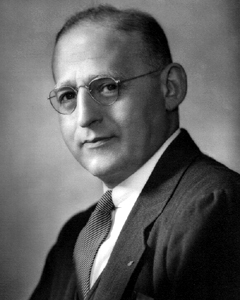
|
Alfred Marchev
Born
on August 25, 1896 in Petrikau (Lodz), Russia (now Lodz, Poland), Alfred Marchev emigrated to the USA
from Europe in 1919. His early job career included aviation experience
with Thomas Morse Aircraft Corp. and in the 1920s - forming his own
radio company. Later he had various production engineering jobs
with Western Electric, Ithaca Gun Works, Ditto Inc. and Signode Steel
Strapping Co.
On 12 July 1921 he married Martha Goodspeed Bovier.
They had three children; George Bovier Marchev, Mary Elizabeth (Mimi)
Marchev and Alfred Marchev Jr.
In March 1942 Marchev was 'headhunted' by Republic
Aviation Corporation's third president, Ralph Damon. Starting out as
Damon's assistant, Marchev's remarkable skills in production management
and production engineering soon had him managing both the Republic
plants, in Farmingdale, NY, and in Evansville, Indiana. At the peak of
the war, the two Republic plants were turning out a total of 450 P-47
Thunderbolt fighters a month!
When Damon stepped out in September 1943, Marchev
moved smoothly in as Republic's fourth President. This was the
first nonviolent administrative shift in the company's history. At
long last, Republic's stockholders could assume that their company had
achieved the maturity of management stability. It was also healthy
enough that year to pay a 25-cent common-stock dividend - the first in
history.
As the new president of RAC, Marchev was soon facing
the emerging challenges of peace! The end of WW2 would mean a dramatic
reduction in military sales. Marchev very early realized that he
had to start preparing Republic for the civilian market. It was
expected that of the many thousands of military pilots returning home,
many would like to have their own personal airplanes when war
ended. Also the giant leaps in aviation technology made during war
would make the air transportation look completely different. And finally
- the first US military jets were developed. Republic decided to
focus their peacetime on three new aircraft; the four engine XF-12
/ RC-2 Rainbow propeller transport, a single engine four seat personal amphibian and the XP-84 Thunderjet jetfighter.
Late 1943 Republic acquired the manufacturing rights
for a small pusher amphibian, the Spencer Air Car, designed and flown by
Percival H. Spencer just before USA entered the war. Spencer
had previously been one of Republic's manufacturing test pilots for P-43
and P-47, but was now
hired by Marchev to be a design consultant for Republic's secret
peacetime amphibian project. The board accepted Marchev's direction and
early 1944 a small group of dedicated engineers started the building of
a concept prototype under the designation RC-1 ("Republic Commercial
One") Thunderbolt Amphibian. The RC-1,
registered NX41816, made her first flight
on 30 November 1944 with Spencer at the controls.
However, Republic Aviation's president Alfred Marchev, realized that if
Republic was going to win the expected post WW2 personal airplane market
boom, they had to make something different at a price affordable for the
masses. Marchev contended that there was something
drastically wrong with the design of airframe structures, since their
manufacturing costs were so high. Comparing it with automotive
standards, he felt that for the cost of making a single assembly such as
a wing or tail, it should be possible to make not just one, or two, or
even three, but anywhere from five to ten times as many by simplifying
the designs and reducing the number of parts required.
Alfred Z.
Boyajian, one of Marchev's most skilled engineers, wrote about Marchev; -
He deserves great credit for being one of the first
executives who not only established what was wrong, but more important,
did something to correct it.
Marchev ordered a complete redesign of the Seabee to
reduce the cost dramatically. He wanted to build and
sell personal aircraft at the price of automobiles...! The seemingly impossible goals
Marchev set for his engineers were: a four seat amphibian aircraft
at a sales price of $ 3.000 - the conventional prototype would have an
estimated sales price of $ 13.000!
The
engineers, headed by Alfred Z. Boyajian, took the challenge. Several changes were made; the
tapered cantilever wings were replaced by constant chord strut braced
wings, the partly burried retractable wheels of the RC-1 were replaced
by wheel retracted in the free air. Number of parts were reduced
substantially by introducing deep die press forming methods from the automotive
industry, and wherever possible automotive parts and components were
used in favor of overpriced aviation industry parts. In order to
reduce the costs of the engine installed, Republic even acquired the
engine manufacturer. Republic also negotiated large quantity rabates
from vendors. For the first time an aircraft manufacturer seriously
looked to the automobile industry to take advantage of automotive design
and manufacturing methods for reducing production time and costs.
Unfortunately,
several factors made big problem for the Seabee production and sales.
Important manufacturing tools such as sheet metal presses got delayed
from the tool subcontractors, material and labor costs increased
forcing Republic to increase sales price twice in less than a
year. Production deliveries got delayed and production rates were
never even close to the original goal of making 400 Seabees per month -
5.000 in one year. In June 1947 Republic was forced to stop production
when sales failed, after only one and a half year and 1060 built.
On 2 October 1947 Republic announced that the Board had made the final
decision to terminate the Seabee project in favor of military aircraft
such as the new F-84 Thunderjet fighter jet.
On December 28, 1946, it was announced that Republic's chief engineer Alexander Kartveli had been elected a Director. Three days later, President Alfred Marchev was shifted to the board chairmanship, and his
forty-year-old sales manager, Mundy I. Peale, was chosen to take over as President.
Alfred Marchev died from congestive hearth failure on 27 November
1947, at the age of 51.
|
|
|
|
|
|
|
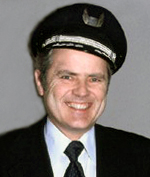
|
Joe B. McHugh
McHugh was a true Seabee enthusiast and an avid long-time Seabee
owner. For many years McHugh developed and sold some of the most
popular and innovative Seabee engine conversions and Seabee modifications available,
through his company Simuflight. The Simuflight GO-480 engine
conversions were installed on Seabee all over the World.
Born August 27, 1931, in Tacoma, McHugh graduated from
Enumclaw High School and served in the Navy Reserves as a pilot. He
lived in the South County area for 70 years.
McHugh worked at Pacific Northwest Airlines as a
flight engineer and co-pilot; at Western Airlines as a co-pilot and
captain; and as a captain at Delta Airlines.
Joe sadly was killed in a tragic Seabee accident on
June 16, 2003. He is survived by his son, Scott A. Henderson of
Anchorage, Alaska; daughters, Penny Larson of Woodinville, Kris Goldman
of Salt Lake City, Utah, and Lynn Clark of Bothell; brothers, Jim McHugh
of Enumclaw and John McHugh of Olympia; sister, Barbara Jussila of
Sumner; and eight grandchildren.
After the tragic death of Joe McHugh, his children decided to
continue the legacy and the support for Seabees that their father so
loved.
|
|
|
|
|
|
|
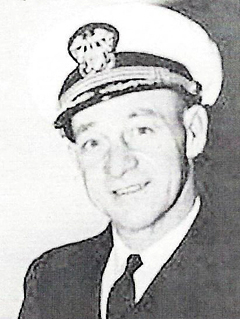
|
C. Robert Mills
Frank Mills had already been
operating the Philadelphia Seaplane base for 5 years when, in 1920,
his second son Bobby, was born. If anyone ever grew up in aviation it
was Bob Mills.
In his early years Bob lived right
up the street from the Seaplane base where his father worked. Bob and
his two brothers all worked for their father at the base while they
were growing up. All of the brothers eventually earned both pilots and
mechanics licenses.
Bob tells the story of his first
introduction to the Aero Club of Pennsylvania. His father, who was a
director and long time member, took Bob to the “Wright Brothers
Dinner” in about 1932. Bob remembers the speaker, Dr. Hugo Eckener,
the commander of the Graf Zeppelin. Bob later joined the Aero Club
himself and is still a member today. In 1939, Bob went to Miami to
work for Pan American Airlines as a mechanics helper on the Sikorsky
S-40 and S-42 four engine flying boats that Pan Am was flying to South
America. Bob was primarily assigned
to work on the S-42 that flew from Miami to Rio de Janeiro. The round
trip took 10 days and put 100 hours on the airplane. During his time
at Pan Am, Bob had an opportunity to work on a Boeing 314 flying boat
that was unable to get into New York for service and had come to
Miami. He remembers that he was able to stand up inside the center
section of the wing and walk through the wing between #2 and #3
engines. Pan American also had a Boeing 307, which they used to fly
from Miami to Mexico City. It was the first pressurized airliner. Bob
remembers working on it and installing larger oil coolers to help with
oil temperature problems when flying over the mountains.
Bob remembers getting his
recommendation ride for his commercial license from Ernie Buehl, who
Bob had watched solo one of his father’s airplanes many years
before.
In 1940, Bob’s father got sick and
Bob returned home to help at the Seaplane base.
After his father’s death, Bob
operated the base until December 8, 1941 when all civilian flying
within 50 miles of the coast was curtailed. The propellers were
removed from the airplanes and the hangers locked until further
notice. Bob then went to work at the Naval Aircraft Factory at the
Philadelphia Naval Base.
In June of 1942, Bob was sworn into
the Navy as a Seaman 2nd Class in the Aviation Cadet program and went
to Pensacola, Florida.
In July 1943, he graduated as an
Ensign and Naval Aviator and received his “Wings”. He continued
his training to be a Torpedo Bomber Pilot flying the Grumman TBF “Avenger”
aircraft.
1944 found Bob aboard the USS Santee
in the Pacific as a torpedo bomber pilot.
The Santee was an old tanker that
was converted to an aircraft carrier. It is during this time that he
was awarded the Distinguished Flying Cross for his part in the
operation in Leyte Gulf. Bob returned to the United States and went to
Night Fighter school in Daytona Beach flying Grumman F6F “Hellcats”.
After the war ended in 1945, Bob
returned to Philadelphia. His older brother Frank already had the
Seaplane base operating. Bob received his Flight Instructor
Certificate in 1945. When his younger brother Bill was discharged from
the Navy in 1946, all three brothers operated the Seaplane base
together. They became dealers for Cessna and the Republic “Seabee”
aircraft. They did pilot training, air taxi, and maintenance.
Later, brother Frank decided to
pursue a career in corporate aviation and Bill decided to concentrate
on the boating side of the business.
Bob continued to devote his time to
the flying part of the business. During 1945, Bob joined the Naval
Reserve and during his career flew Grumman FH-1 Phantoms, F9F6 Cougars
and Lockheed TV-2 (T-33B) trainers. He ultimately became Commanding
Officer of Jet Fighter Squadron 934 at Willow Grove Naval Air Station.
In 1980, Bob retired from the Naval
Reserve after 27 years of service with the rank of Commander.
In 1954, Bob became a Designated
Flight Examiner and started giving pilot flight tests.
From 1972 to 1975 while still
operating the Seaplane base, Bob also worked with Downtown Airlines as
Chief Pilot. Downtown Airlines flew Piper Aztecs and de Havilland Twin
Otters on straight floats. They operated from the Delaware River at
Penns Landing in downtown Philadelphia to the East River at the foot
of Wall Street in downtown New York City. They flew five round trips a
day. The trip took about 30 minutes which was much faster than even
the Metroliner from downtown to downtown.
Over the years Bob continued to add
more examiner authorizations and was able to give Private, Commercial
and Instrument ratings in single engine land and sea airplanes.
He was also authorized to give
private and commercial multi-engine flight tests in Cessna 310 and 320
series, Beech A55 and 95 “Barons and Travel Airs”, Trecker “Gull”
P-136-L1, de Havilland DHC-6-300 “Twin Otters”, Piper PA-23 “Apache”
and PA-30 “Twin Comanche” series, Aero Commander 560 series,
Grumman G44 “Widgeons”, Douglas “Dolphin” model 9, and
Commercial “Type Ratings” in the Grumman G-73 “Mallard”. The
Douglas Dolphin is unusual as there is only one left flying and Bob
was the only examiner authorized to give flight tests in that
airplane.
In 1998 at the age of 78, Bob earned
a “Type Rating” in the Grumman G-64 “Albatross”, the largest
of the Grumman amphibians.
In the almost sixty years that Bob
operated the Philadelphia Seaplane Base he became very well known.
Much of his business was giving
seaplane ratings to airline pilots that came through PHL on layovers.
They would find the seaplane base,
come in look around decide to fly with Bob and then go back and tell
all their buddies how much fun it was to get a seaplane rating in
Philadelphia. This of course created a never-ending supply of
customers for seaplane ratings.
Bob Mills passed away from
congestive heart failure on March 29, 2008 at Halifax Medical Center
in Daytona Beach, Florida. He was 87. Bob reviewed this article for
accuracy a few weeks before he passed away.
He will be sorely missed. His
passing is truly the end of an era for the aviation community in
Philadelphia.
Seaplane operations at the
Philadelphia
Seaplane base continue under the direction of Bob’s successor and
good friend Hank Grenfell. Bob’s memory will live on with every
seaplane landing on the Delaware River.
Source: "Pennsylvania
Pilot", Vol 19 No 2, Summer 2008
"Member Tribute - C. Robert Mills, 1915 - 2009"; by Walt Ellis
|
|
|
|
|
|
|

|
George Mojonnier
George Mojonnier should certainly be included in your Seabee project.
I don't know if you will be getting any other information about him but
I will put down now what I know.
When I bought my Seabee in '65 while living in the Chicago area, I was
told I should contact George who headed up the Chicago Seaplaners Club.
They met once a month at a dinner-meeting and participated in flying
activities on most weekends. It was open to anyone with a seaplane
but all the members I met had Seabees. George had an A&P
license and was a great help to me, as were the other members of the
club.
All of us were constantly thinking about ways to improve the performance
of the 'Bee and everyone agreed the biggest need was for a larger, more
modern and reliable engine. To my knowledge, George had the
original idea for installing the Lycoming GO series engines. This
was because gear casing would help keep the engine further forward than
other engines and it was readily available at a reasonable cost.
He had an old GO-435 that he used to calculate the C G changes and made
a plater of paris mold around it for proposed cowling. He didn't
have any aeronautical engineers closer than St. Louis for help so was
unable to get very far in his plans.
About that time I moved to Seattle where there were a lot of Seabees but
no club. I sent out a mailing to all the Seabee owners in the area
and invited everyone to a dinner-meeting at a restaurant on one side of
the old Bellevue Airport. I think we had 35 or 40 people at that
first meeting. It was a great success and it was noted that we had
a number of engineers from Boeing in attendance. Over the next few
months one of them, Steve Gross, agreed to do the calculations and
actually build a motor mount for George. I flew it back to George
on one of my flights to Chicago.
Another engineer was Jack Daubenspeck who decided to design his own
engine conversion. Jack's main job was as a design engineer at
Kenworth Truck in Seattle but decided to form a small informal company
he called, Aerocraft Inc. to do work on Seabee modifications. He
also designed and built a droop wingtip and made molds so he could
manufacture them and sell them. Jack was the president of
Aerocraft and I was the Vice President. Somebody put up $5,000.
but I don't know who that was and never met him. He was named
Treasurer.
George Mojonnier and his wife, Mary, came out to see what was going on
with our active group and soon decided to move to Seattle. George
became disenchanted with Jack and proceeded to continue work on his own
Lycoming conversion design. He did this very quietly and after a
few years he had his own, one time STC'd conversion with a GO-435 flying
on his Seabee. I didn't know about it until one day he showed up
with it.
In a few more years George and Mary moved into Western Airpork at Yelm,
WA. Steve Gross built his own house next door. Randy Komko
had his house and hanger on the other side and at the end of the runway.
John Greef had his house and hangar about mid-way down the runway and on
the same side as Randy's house.
I don't know the date when George passed away of natural causes but
believe it was in the mid 90's. Mary had been in a home and had
also passed away. George's daughter-in-law sold George's Seabee to
a man in California and Joe McHugh agreed to fly it to California with
the new owner. Joe and the new owner crashed after the engine
quite right after take-off, killing Joe outright and severally injuring
the new owner. The new owner may have died from his injuries
later.
I forgot to mention that George wrote a column for awhile for The Green
Sheet, an aviation newspaper in the late 80's
Perhaps others could add to this bio about George. I always
considered George as, "Mr. Seabee".
Donald V. Kyte 2006
|
|
|
|
|
|
|

|
Benjamin Stuart Paschall
4/2/1933 - 5/27/2017
Ben was born in Seattle to Benjamin and Helen Paschall. The family lived
in the Madison Park area and Ben attended several different schools in
the Seattle area. He went to St. George’s in Vancouver, BC for high
school, after which he joined the Navy in 1951. He got his honorable
discharge in 1954 as an Electrician’s Mate. He came back to Seattle
and started a landscaping business for several years, before managing,
with the help of his mother, his late father’s company that
manufactured asthma nebulizers. Eventually, when he took over the
company, Ben guided Pascal Company into another direction - that of
manufacturing dental products - and further expanded it into the
thriving international business it is today. Ben valued and treated his
employees as family, to the extent that the majority of them have been
with him from 18 to 45 years.
During part of this time, he was married to Joan Larson and enjoyed
raising his 3 children, living on houseboats, sailing around the Sound
in his 6-meter sailboat, and flying all over in his 1947 Republic SeaBee
amphibious airplane. After his divorce, Ben started a new phase of his
life - that of the party bachelor, avid skier, tavern owner, pilot,
traveler, and continuing international businessman.
His third life phase started when he met his future wife, Penny Braden,
in 1983 at a ski club function. This was the beginning of a long, loving
friendship and life together of skiing, hiking, traveling, cruising,
RVing, flying, and boating on their beautiful Skookum 53. After all
those years, they decided that “this just might work” and got
married January 2016. Their future plans for more fun adventures
together were interrupted by Ben’s being diagnosed with Lewy Body
Dementia. Even after that, they managed to squeeze in several more trips
to South Africa, Dubai, New Zealand and Australia. To the end, he still
had his lovely smile and caring heart.
He is survived by his wife, Mary (Penny); his children, Susan Rich
(Casey), Steven, Brian (Deborah); his grandchildren Lenny & Rachael
Rich, Aiden, Erika, & Cayden Paschall, Ariana Langheld; his
sister-in-law, Jenny Paschall and her children; his step-brother, Stuart
Murphy (T.J.) and their children.
|
|
|
|
|
|
|
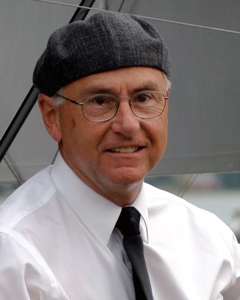
|
Harlan James Poel, Jr.
May 16th, 1943 - January 29th, 2011.
Harlan James Poel, age 67, of Daytona
Beach passed away on January 29, 2011. He suffered
a heart attack after recovering from his injuries from his "Curtiss
Albany Flyer" accident on June 18, 2010. Jim
was a true "mans-man" with his love, Lovada, by his side for
31 years. He began a career in aviation at the age of 22, with his
career spanning 38 years with American Airlines. He was a test pilot and
often a special speaker for Glenn H. Curtiss Museum of Hammondsport, New
York. He and his wife were co-founders of the Seaplane Homecoming, which
was held at the Curtiss Museum. Those who are left behind to cherish his
memories are his wife, Lovada, mother Velma Forgarty (husband: Ed), one
daughter, Debra Pope (husband: Chris), two brothers Charles Poel (wife:
Fran), Thomas Poel (wife: Laurie), and one sister Karen Rickards
(husband: Bill). Jim is preceded in death by his father Harlan James
Poel and one daughter, Sherri. His family and friends will greatly miss
this gentle man. There was a "Celebration of Life", on Friday,
February 4, 2011 at the Spruce Creek Fly-in Community.
Jim was the proud owner the award
winning Republic Seabee N6240K (s/n 443).
Together with Lovada and other members of the "Bee Gang" he
frequently visited seaplane gatherings and other fly-ins to the joy of
everyone who loves the Seabee. An avid promoter of the Seabee, Jim
always willingly shared his knowledge and advice on the Seabees to
everyone interested. He was also an expert Seabee flight
instructor. The Seabee Community has lost one of its most
influential members.
|
|
|
|
|
|
|
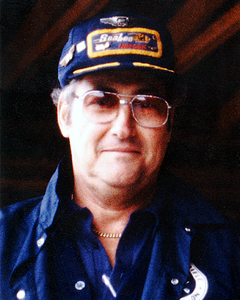
|
Capt. Richard W. Sanders
Richard
W. Sanders was born in Minneapolis, Minnesota, on 13 October 1927.
He soloed as a student pilot in 1952 and two years later he earned his
commercial pilot rating. From late 1954 he was a commercial
pilot with Central Airlines, Fort Worth, Texas, and later Frontier Airlines,
Denver, Colorado. Some of the aircraft types he was a pilot on
included; Douglas DC-3, Convair 240, 340, 440, 580 propliners and Boeing 737
jets. Richard retired as an airline captain in 1975, but continued
to fly commercially for a number of smaller companies and as a test
pilot until 1985. His logbooks were closed with more
than 21,000 hours in them... Since
August 1970 Richard owned Seabee N6458K (s/n 709), bought from a
TV station owner in Minneapolis. N6458K was a former Einarson Bros
aircraft, and had the recognizable 'trademarks' of Einarson's
Seabees; splates, inboard wing-root fences and extended spray
rails. When living in Ft. Worth during the 1970s Richard belonged to the 'Texas Swarm'
of Seabee enthusiasts. 'The Swarm' included people like Tom Danaher
(N191VW), Capt. Marion Wright (N6048K) and E. E. Stell (N6705K). They
would get together whenever they could for Seabee meetings and
frequently the Seabees were operated from
Eagle Mt. Lake. In 1977 Richard met Peggy, who also
was a pilot, and together they moved to Fort Lauderdale, Florida.
Richard
offered Seabee instruction and charter rides in Florida under his
business' name Tradewind Seaplane Service. He was
also hired as test/demonstration pilot for Teal Aircraft Corp. in St.
Augustine, where he flight-tested new Teal amphibians and demonstrated
them for potential buyers. During the 1970s Dick was the test pilot for
10 US government surplus Grumman Albatross amphibians sold to Mexico.
In the 1980s Richard piloted Grumman Albatross N6969 for The Smithsonian Institution
throughout the Caribbean
on marine biology research missions out of Andrews AFB. The Albatross was Dick's favorite airplane - "The Ultimate
amphib!". Together with Peggy, Richard started the Seabee Club International in
1983 to continue the
efforts of Mr. George Mojonnier in the 1960s and 1970s. Richard & Peggy
did a tremendous job publishing the highly informative 'Seabee Club International Newsletter' for
9 years, the first published in April 1984, the last (#30) in
April 1993. Richard was a member of Seaplane Pilots Association (SPA#200), and he was the
Southern Director for several years.
From 1993 Richard sadly started to suffer from Alzheimer's decease and on 2 February
2001 he passed away. He was survived by his wife Peggy and his two sons West and
Rand, who both are commercial pilots. Dick will be remembered by Seabee
enthusiasts and
aviation friends from all over the World...
|
|
|
|
|
|
|
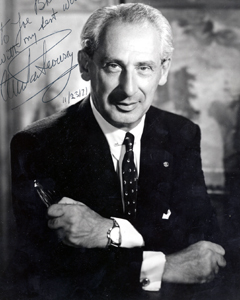
|
Alexander P. De Seversky
Alexander
de Seversky (1894-1974). Born in Triflis, Russia, 7 June 1894.
Died 24
August 1974. After acquiring an aeronautical engineering degree,
Alexander Prokofieff de Seversky was commissioned as a lieutenant in the
Imperial Navy of Russia in 1915. On his first combat mission he lost his
right leg. Less than a year later he was back in the air, flying 57
missions, and downing 13 German aircraft to become Russia's top Naval
Ace. In 1917 de Seversky came to the USA, offering his services to the
War Dept, making outstanding contributions to their production of the
British-designed SE-5 fighter and serving as a test pilot.
In 1921 he and General Billy Mitchell worked together
staging the bombing tests that graphically demonstrated the
vulnerability of battleships to airplanes. Then, following his invention
of the in-flight refueling method, he worked with the Sperry Gyroscope
Company, to produce a gyro-stabilized bombsight in 1923 that was
acclaimed the world's best. He was commissioned a major in the USAAC,
and founded Seversky Aircraft Corp in 1928. In 1930 de Seversky again
made a most important contribution to his new country's air efforts in
the all-metal P-43 fighter, predecessor of the historic P-47
Thunderbolt. Many of its new concepts are universally accepted
construction principles for today's aircraft. Capable of speeds over 300
mph, the P-43 gave long-range and high-altitude protection to US
bombers. He also developed an advanced design amphibian in which he set
world speed records 1933-35, and an all-metal monoplane that set speed
records at the 1933-39 Nationals, as well as a transcontinental speed
record in 1938.
The outbreak of WW2 found the US air arsenal pitifully
neglected. To bring the magnitude of this problem to public attention,
de Seversky wrote his best-seller book, "Victory Through Airpower". Also made into a movie, it awoke people to the need for
better airpower. For that, and for his counsel on the strategic use of
air power, President Truman awarded him the Medal of Merit. By then he
had become world reknown as an expert in the areas of airpower and
defense. His Seversky Electroatom Corp of 1952 directed its efforts to
defending the USA against nuclear attack, and to extraction of
radioactive particles from the air. Research in that area led to the
discovery of the Ionacraft, an aircraft that derived lift and propulsion
from ionic emissions. For serving as a special consultant to the Chiefs
of Staff of the USAF, he received the Exceptional Service Medal in 1969.
De Seversky was enshrined in the National Aviation Hall of Fame in 1970.
|
|
|
|
|
|
|
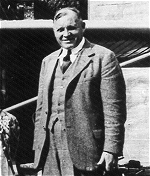
|
Thor Solberg
One of the most famous Norwegian aviation
pioneers. In 1935 Solberg flew a Loening Air Yacht amphibian
(wheels removed) from New York, USA, to Bergen, Norway, via Canada,
Greenland and Iceland. During WW2 Solberg founded the Solberg
Huntington Airport in New Jersey, USA, where his flying school would
educate more than 2000 US Army pilots.
After the war, Solberg came back to Norway to start a
flight school and he was also the Republic representative for
Norway. Solberg imported a total of 10 Seabees from Republic for a
number of Norwegian operators, including his own operation 'Thor Solberg
Flyveselskap A/S'.
Due to the hostile bureaucratic climate for starting
aviation businesses in Norway, Solberg moved back to the USA in 1948, where he
continued running the Solberg Huntington Airport. Solberg returned to
Norway again in the mid 1950s, when he started a large flying school at
Jarlberg Airport after American pattern. [Under construction]
|
|
|
|
|
|
|
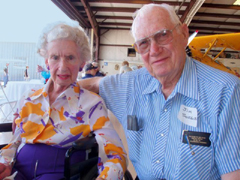
|
Jim "Big Jim" Sorensen
Our
seaplane family lost one of its finest in the late afternoon of April
7th 2010, when Jim Sorensen ("Big Jim", as many of us called him)
passed away. He would have been 93 in November. In spite of a number
of medical problems that he had been dealing with successfully, he was
still driving and getting around until he suffered an aneurism in his
head on March 19th and had to be rushed to the hospital and placed in
Intensive Care.
All seaplane-pilots either know Jim
or have benefited from his influence with legislatures to prevent
restrictive rules regarding seaplanes, particularly in California.
When Walter Windus became the West
Coast Representative for The U.S.S.P.A. (now SPA), Walt organized the
first Clear Lake Seaplane Splash-In that takes place each September,
and nearly all of them since. Jim and his wife, Dete, were part of the
group of local pilots and business people who work hard each year to
make this the major seaplane event of the western U.S.
Walter and his wife, Sue, spend many
hours each year promoting seaplane activities and solving problems of
access to lakes and reservoirs. Jim owned a Seabee, so helped Walt
with problems relating to amphibious activity. Jim and Walter became a
great team. Walter did the ground work and Jim supplied the muscle,
where needed, with the powers that be.
All of the business people and most
of the long-term residents living within fifty miles of Modesto,
California know of "Big Jim" Sorensen. Jim’s company built
a lot of the huge warehouses and factories in that area, and all over
the west. As a result he was well known and respected by those who
make the rules in California.
Jim had learned to fly while working
as a mechanic for Pan Am on China Clippers at Treasure Island in San
Francisco Bay in the late 30’s. He had a friend, "Spanky"
Allen, who was learning to fly at the Alameda airport near Oakland.
They were buddies and after Spanky had soloed, he would take Jim up
and show him what he had learned. This friendship lasted throughout
their lives. Spanky went on to become a legendary pilot for United
Airlines and expired at the controls of his bi-plane years ago. His
passenger, who was not a pilot, was talked down to a safe landing by
instructions over the radio.
After Jim was able to solo himself
he met an attractive blonde nurse named, Dete. He wooed her with
flights over the Bay Area and soon won her heart. When Jim could
afford it, they were married. Jim often said, she was the best thing
that ever happened to him. Those of us who knew them well, fully
agreed. In later years when Jim had lost his FAA medical and could no
longer fly as pilot in command, Dete learned to fly at age 70 and also
checked out on Jim’s Cessna turbo 206 on amphibious floats so they
could continue making flying trips. When Dete could no longer fly, Jim
sold it to his good friend, Tom Hillier, who had taken over the lease
on the large hangar Jim had built at Modesto Airport. Tom maintains a
private museum there now and the 206 and a few other planes Tom owns
are displayed there. These planes are maintained in excellent flying
condition. Tom routinely conducts tours for young students from
schools in the area.
Jim owned a number of planes through
the years. He never drove anywhere that he could reach flying. He
owned a Beech Bonanza for a few years but bought a top of the line
twin-engine plane Dete named the "Hot Canary". This was a
Beechcraft Baron painted a bright yellow. They flew it everywhere in
all kinds of weather. Jim was a conscientious, pilot who kept up his
piloting skills religiously. He even owned a small flight simulator
that he kept at home to practice instrument flying. He meticulously
planned everything he did. This applied to his constructing business
as well his hobbies.
Jim owned an almond orchard south of
Modesto which surrounded his home and outbuildings. This included a
well equipped shop where he worked on a number of Seabees he had
acquired. He personally restored at least two Seabees that I had
located for him. When they were completed they were as near perfect as
humanly possible. I have flown dozens of Seabees over the years and
none of them were better than Jim’s. After Dete passed away in 2003,
Jim bought a luxury apartment in a retirement home in Modesto. His
good friends, Tom and Margie Hillier kept in close touch with him.
They were his closest companions during his final years. Friday night
dinners out with Jim and a few friends happened every week.
Don Kyte
|
|
|
|
|
|
|
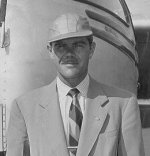
|
William Wesche Jr.
William Wesche was born on February 15, 1924, in Farmingdale, Long Island.
After completeing high school in the summer of 1942, he enlisted in the US
Army Air Corps. He completed primary flight training - Class of 44-D -
April 1944 and went on to fly 18 combat missions out of Foggia, Italy, as a
commanding pilot of B-17 bombers. He was slated for B-29 training,
when war ended. Wesche was discharged as a 1st Lieutenant in October
1945.
Upon returning to Farmingdale, he found work as an Air
Traffic Controller at Republic Aviation Coporation's (RAC) Control Tower
(FRG), where he met his future wife Mary McPartland. Incidentally, the
Federal CAA did not hire women to work as controllers back then, so she
worked for RAC. Ms. McPartland was one of the
first rated female Air Traffic Controllers in the USA.
In September 1946, when the Seabee amphibian production
went into overdrive at RAC, Bill transferred to the flight-line as a Seabee
test- and executive/ferry pilot. During this period, Chuck Yeager was
a military test pilot stationed at RAC. Bill and Mary were friendly
with Chuck and his wife Glennis and even occasionally
double-dated. From roughly September 1946 to June 1947 Bill's job was
to take a freshly minted Seabee from the assembly line, put it through the
paces and ultimately declare it air/seaworthy. Between test flight he
demonstrated Seabees to potential customers, and if a sale was made, would
render enough flight instruction to bring the new owner to currency.
Many potential customers conducted business in the NY City area and with the
accessibility of Long Island Sound, NY Harbor, and The Hudson and East
Rivers, a Seabee made great sense. Bill found himself flying into
numerous waterports often.
As Bill and Mary became more serious, she had major
concerns about the dangers of test piloting more than a few times...
E.g. on one occasion Bill had to, unexpectedly, put a Seabee in on the Atlantic Ocean of all
places! Bill left test piloting for good in June 1947, married
Mary and began working as an Air Traffic Controller with the CAA at
Barnes-Westfield tower in January 1948. From there he transferred to
New York's Idlewild Tower (now JFK), and eventually to Bradley Tower in
Windsor Lock, CT, where he retired as a supervisor in January 1979. He
passed away on September 30, 1994. [Many thanks to Mr. Jeffry Wesche, for
sharing this interesting information about his father].
|
|
|
|
|
|
|
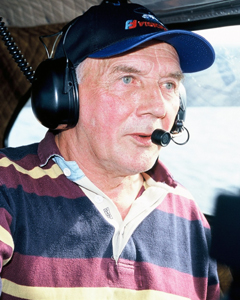
|
Ture Wirén
One of the World's most experienced Seabee
pilots. Ture was a Seabee pilot with Fiskflyg AB in Sweden for
more than 20 years; 1978 - 1998. The webmaster got his first, and so far only,
Seabee ride in SE-AXB piloted by Ture on 19 July 1999. Thank you
Ture!
|
|
|
|
|
|
|
|
|
WANTED!!
Biographies and photos wanted for the following
Seabee people:
Jack Daubenspeck - Seabee modifications
Jason K. Downer - Downer Aircraft
Hank Faller - Republic Seabee Test Pilot for CAA
John Gitz - Republic Seabee Engineer
James R. (Bob) Humphreys - Downer
Seabee Engineer
Donald V. Kyte - Seabee owner/pilot expert
Russel Miller - Seabee modifications
Wendell 'Wendy' Miller - Republic Seabee Engineer
Tex Rankin - Famous racing pilot, and Seabee owner
Michel Wibault - Republic Seabee Engineer
|
|
|